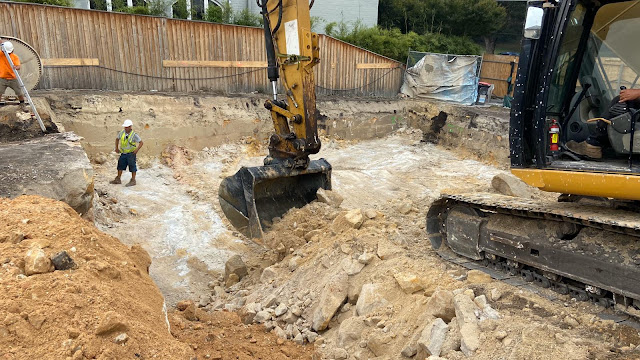When one speaks about excavation, the most immediate thought that comes to your mind is that of archeologist carefully brushing fine dust out of ancient bones and other artifacts. But excavation is much more involving than that. Excavation covers all aspects of uncovering soil for planting a tree in a seedbed to digging up huge earth in deep mining sites. Naturally, therefore, excavation is part of our daily life. And we have been involved in this activity not only as a child’s initial play but also as high tech interstellar explorations. We seem to have exhausted all the avenues and techniques used in excavation, but to our surprise, new systems keep cropping up.
There are different kinds of excavation for specific purposes and materials. So what are the popular types of excavation in Sydney methods currently in use? We look at these in the details below: Rock This probably is the most popular excavation style. It's applied when you need to strip off a hard or rocky surface for an engineering project. The process is demanding and requires specialized equipment and tools for the proper execution.
Channel
When you want to divert a water flow or increase the flow rate, you usually employ the channel method of excavation. This technique involves widening water canals and reducing the bottom adulation to enhance flow rate.
Underground
As the name suggests, this method of excavation usually takes place underground. It’s used to open up quarries, mines, and tunnels. It could both be vertical as well as the diagonal in alignment. The method is also apt when constructing sewerage systems or subways.
Drainage
The excavation method used to remove water from ditched, runoff drains, storm drains as well as irrigation lands are termed as drainage excavation. It’s mostly used to prevent flooding and reduce water stagnation.
Topsoil
This method is used to spread the topsoil from the ground to have a flat surface to work.
Borrow
Burrow excavation is ideal where loose soils and gravels are extracted to be used to fill up the holes and other burrows. It’s mostly used to make a uniform surface.
Dredging
When sediments and siltation clog waterways, dredging is applied. Dredge excavation removes the soils so that the flow of water is uninhibited.
Roadways
During road construction, road excavation is done. When the removed materials are suitable for development, the excess soils and debris removed from one site could be used to fill or construct other areas of the same or a different project.
Muck
During heavy rains, muck forms on certain segments of the flooded areas. Muck excavation is applied to remove the unwanted soil. The muck is spread to dry and could be used in agricultural regions since it’s fertile.
Footing
When a small foundation is made to support the primary foundation for an engineering project such as a bridge, is called a footing. Footing excavation is done to open up the area for the construction of this type of foundation.
Earth
Just below the topsoil is the earth. During engineering or construction projects, earth excavation Sydney is applied to reach a firm ground that could support a building’s foundation.

Comments
Post a Comment